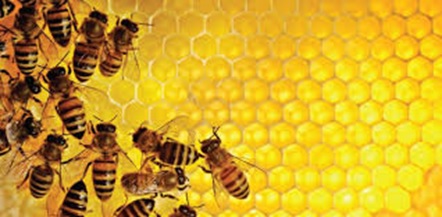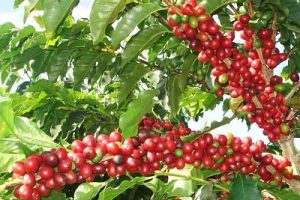
BY ABEBE WOLDEGIORGIS
The honey production and business does not require large areas of land and huge labor. However, if attention is paid for honey production, realizing job creation and balancing diet is possible. According to experts, honey production can bring more than three benefits. Practitioners who changed their life through the business testified this reality.
Simply explaining the matter, in the beginning, flower plant producers which serve bees for honey production generate income. Bee’s colony sellers also obtain income. People engaged in bee reproduction also gain a lot. Others also engaged in refining crude honey and supply by- products and sell wax for candle production and other purposes generate income. To continue the whole process modern beehive is essential. Therefore, youth engaged in wood work can produce modern hives and generate their income.
The sector also creates job opportunities to people engaged in textile sewing which used for honey producers wear during honey harvesting. In Ethiopia, places that are located 1000 -2400 meters above sea level are proved that they are conducive for honey production. In these areas floras that are grown after the end of the rainy season said conducive for the availability of pollen which helps for bee reproduction and honey production.
Though there are many types of bee species and millions of honey producers in Ethiopia, according to experts, the nation does not benefit from the sector as it is expected due to various reasons. Therefore, to maximize the benefit obtained from the sector, establishing bee reproduction and honey production industry is essential.
It also needs introducing new technology helpful to the sector, increasing tree planting, creating value chain and modernizing honey production system. According to the Ethiopian Agricultural Transformation Institute, Ethiopia has the capacity to produce 555,000 tons of honey and supply to the market annually. Nevertheless, till now, it has produced only 9 % of the total capacity which is 50,000 tons annually.
According to the Ministry of Agriculture, in the 2020/21 budget year Ethiopia produced 129 thousand tons, the amount of wax production was 6,300 tons. Though more than 1.8 million farmers, semi pastoralists, investors, urban residents and extension service workers are engaged in honey production in Ethiopia, the outcome is not satisfying.
Honey production and its value chain can create job opportunity to thousands in this country. This is proved by International Center of Insect Physiology and Ecology- ICIPE which works in cooperation with the Canadian based organization by its name ‘Mastercard Foundation’.
The institution is engaged in environmental protection works and insect researches. It supports rural population engaged in honey production to raise productivity by providing technical support and extension services so that enables to uplift their living standard through raising their income. Particularly, it extended its work in Amhara region.
The institute crafted project focusing on youth to create job opportunity through providing training regarding modern honey production and fertilizing silk worm for textile production. In addition to Amhara, it is implementing its projects in the regions endowed with rich resources such as Southern Nation and Nationalities region, Oromia and Tigray regions. It could create jobs for 70 thousands youths in these regions. In general, the center is working to train and create job opportunity to 100 thousand youths on honey production in the coming five years.
The research center project coordinator, Workineh Ayalew (PhD) said that till now the center spent 25 million Dollars for training and creating job opportunity to youth and totally it obtained 55 million Dollar from mastercard foundation to support the project.
He further said that currently 65 thousand youth are engaged in honey production and training will be given to them with regard to trading skills, life skill, planning, saving, profitability and other related skills.
Following provision of the training in cooperation with the officials of regional land management offices, efforts will be exerted to provide plot of lands for starting the work. Additional materials helpful to start the work will be fulfilled by the institute and partially by the job beginners themselves.
In the traditional way of honey production, it is proved that only 6 kilograms of honey could be produced per harvest time from each hive. However, with providing modern honey producing techniques, it is possible to produce 9 kilograms from each hive. In fact during the transition period from traditional to modern method of honey production some could produce from 20 to 30 kilograms.
In Ethiopia, there are various types of honey and the geographical landscape and types of bio diversity have their own impact on the produced honey test and content. Honey produced in the Sekota and Waghimra zones of Amhara region has white color similar to milk, whereas in the central high land parts of Ethiopia it has yellow and golden color and in the law land parts of the country, it has mild white color.
Getinet Yalew is residing in Waghimra zone gazgibila woreda kebele 02. He is one of the members of youth association comprised 10 people engaged in honey production. Before they began honey production they were part of the unemployed youths.
In their residential areas, honey production was regarded as taboo. However, after getting training regarding honey production, their attitude has been changed and recognized that the sector can help them to boost their income. By now, they could produce 20 kilograms of honey per hive in a modern method and 6 kilograms and above through traditional honey production per hive. As to him, if they secure credit, they can expand their production and increase their income.
In a similar manner, Belay and his friends are the residents of Guagusasigda woreda of Awi zone. They organized themselves by youth association in 2019/20 and engaged in honey production. They have ten members of which six of them are females and the rest are males. They obtained various supports from International Center of Insect Physiology and Ecology (ICIPE) via More Young Entrepreneurs in Silk and Honey (MOYESH) Program. In 2020/21, they produced and sold 180 kilograms of honey and raised their capital amount. In 2021/22 they took additional trainings and could promote their association to the better level.
In the past, most of the members of the association were moving from region to region in search of job. Now, after they obtained three hectares of land from their woreda, they started producing crops such as maize and wheat side by side with honey production. Encouraged by the witnessed result, the members of the association planned to engage in cattle rearing.
Moa Mengistu is the marketing manager of Oda Share Company and his company is engaged in honey production for the last one year. Now his company works with the ICIPE MOYESH project. The company purchases raw honey from honey producing associations and supplies to foreign markets after refining and packing.
As to Workineh, export business needs sustainability and to that end providing training to raw honey producers and suppliers is essential. The company has planned to purchase 60 tons or 60 thousand kilograms of honey in 2023 from Amhara region honey producers and based on the international price, it will export the products.
He also said that to meet the objectives of poverty reduction through job creation, his company, in cooperation with the areas where the MOYESH project is implemented, will continue to work with the honey producing associations in the rural part of the country. He also said that until recently, less attention was paid to the sector.
Banks also did not give priority to the sector because they assumed that honey production is a risky business. But currently, the money circulated in honey business is increasing and attracted by such a situation, banks have begun to change their attitude. Exporting honey enabled the nation to raise its foreign currency earning capacity. In addition, the growing of the number of business men engaged in honey export pushed the banks to pay high attention to the sector.
The International Center of Insect Physiology obtains foreign currency from donor countries for its research works so that banks showed interest to work with the center. As a result, they could get the hard currency through exchanging by Birr with the center.
The project intends to benefit about 100 thousand youth engaged in honey production. It also intends to support others who showed interest to engage in silk worm production and to date, the number of beneficiaries reached to 90 thousands.
“If there is willingness in the part of the youth, the project tries to increase the number of the beneficiaries to 150 thousand,” Workineh (PhD) said. He further said that poverty is a chronic problem in this country and unemployment is rampant particularly in the rural areas. Hence, engaging the youth in honey production in this regard can be taken as a mechanism to alleviate poverty.
Recently, on 25 October, 2015 E.C Prime Minister Abiy Ahmed (PhD) officially opened the “Yelimat tirufat” program in Arbaminch town. It has an objective to ensure food security through engagement in fattening cattle, poultry and honey production in the compound of each residential house and replicating the achievement witnessed in green legacy manifested by the cultivation of wheat and fruits and vegetable.
The “Yelimat tirufat” program will be implemented in the coming four years. The program targets to increase the current annual milk production from 6.9 billion litter to 11.7 billion litter. In addition, it is targeted to increase the annual chicken production from the current 90,000 tons to 240,000 tons and honey production from the current 147,000 to 296,000. In the meantime it is intended to create job for hundreds of thousands of unemployed youth.
The Ethiopian Herald December 22/2022





